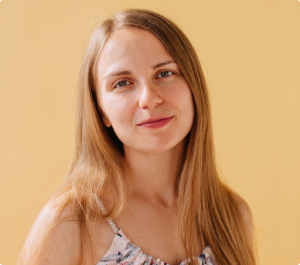Explore Over 11,000+ Conditions, Medications, and Symptoms.
Get a personalized feed by signing up for free.
Additional names
This group contains additional names: - Adult neuronal ceroid lipofuscinosis - Cerebral lipidosis - Gangliosidosis - Sandhoff disease
General
Tay-Sachs disease is a rare disorder passed from parents to child. It's caused by the absence of an enzyme that helps break down fatty substances. These fatty substances, called gangliosides, build up to toxic levels in the child's brain and affect the function of the nerve cells. As the disease progresses, the child loses muscle control. Eventually, this leads to blindness, paralysis and death.
3 people with Tay-Sachs Disease
Learn from others who are experiencing Tay-Sachs Disease.

Signs & symptoms
In the most common form, an infant usually begins showing symptoms by about 6 months of age. Signs and symptoms may include the following: Loss of motor skills, including turning over, crawling and sitting up - Exaggerated reactions when the baby hears loud noises - Seizures - Vision and hearing loss - "Cherry-red" spots in the eyes - Muscle weakness - Movement problems
Diagnosis
To diagnose Tay-Sachs disease, a blood test should be performed. This test measures the level of hexosaminidase A in the body. In a child with classic Tay-Sachs, this protein is completely or partially absent. People with other forms of the disease have low levels. An eye test can also be performed to see if the child has the classic 'cherry red' stain on the eye.
Treatment
There’s no cure for Tay-Sachs disease. Treatment options aim to control some of the symptoms.The goal of treatment is support and comfort. Supportive treatments include: - Medication. To reduce symptoms, including anti-seizure medications. - Respiratory care. Children who have Tay-Sachs disease are at high risk of lung infections that cause breathing problems and frequently accumulate mucus in their lungs. Using chest physiotherapy (CPT) helps to remove mucus from the lungs. - Feeding tubes.For swallowing problems or aspiration problems. To prevent those problems, it may be recommended to use an assistive feeding device such as a gastrostomy tube, which is inserted through the nose and goes to the stomach. - Physical therapy. To help keep joints flexible and maintain as much ability to move (range of motion) as possible. Physical therapy can delay joint stiffness and reduce or delay the loss of function and pain that can result from shortened muscles.
Note
☝ We provide information on prescription and over-the-counter medicines, diagnosis, procedures and lab tests. This material is provided for educational purposes only and is not medical advice, diagnosis or treatment.
National Institutes of Health ∙ World Health Organization ∙ MedlinePluse ∙ Centers for Disease Control and Prevention
☝ All information has been reviewed by certified physicians from Alike
Alike is a transformative platform that goes beyond just bringing together patients; it meticulously connects individuals based on multiple critical factors, such as age, gender, comorbidities, medications, diet, and more, fostering a community of knowledge, support and empathy.
© 2020-2024 Alike, Inc